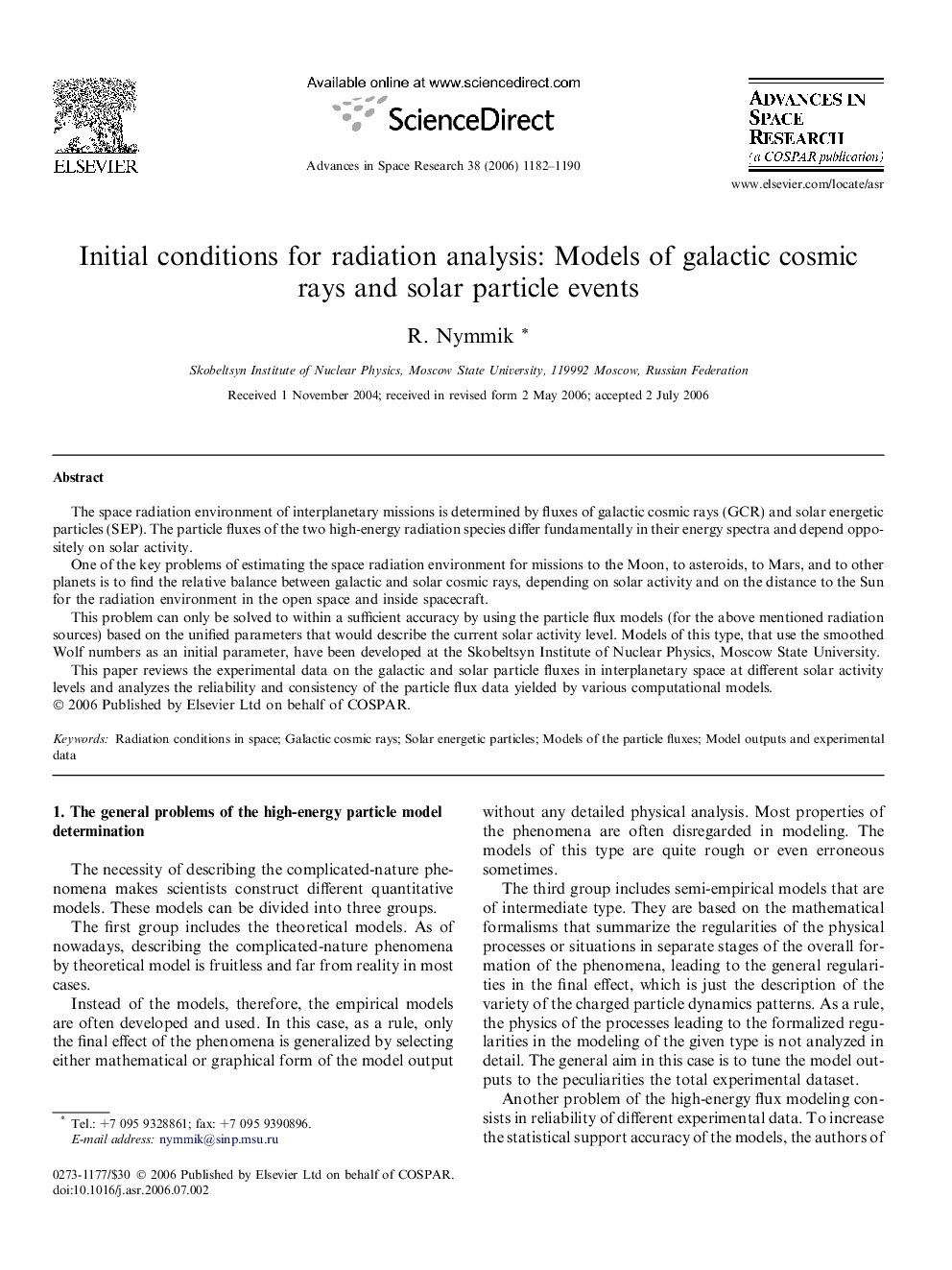| Article ID | Journal | Published Year | Pages | File Type |
|---|---|---|---|---|
| 1769368 | Advances in Space Research | 2006 | 9 Pages |
The space radiation environment of interplanetary missions is determined by fluxes of galactic cosmic rays (GCR) and solar energetic particles (SEP). The particle fluxes of the two high-energy radiation species differ fundamentally in their energy spectra and depend oppositely on solar activity.One of the key problems of estimating the space radiation environment for missions to the Moon, to asteroids, to Mars, and to other planets is to find the relative balance between galactic and solar cosmic rays, depending on solar activity and on the distance to the Sun for the radiation environment in the open space and inside spacecraft.This problem can only be solved to within a sufficient accuracy by using the particle flux models (for the above mentioned radiation sources) based on the unified parameters that would describe the current solar activity level. Models of this type, that use the smoothed Wolf numbers as an initial parameter, have been developed at the Skobeltsyn Institute of Nuclear Physics, Moscow State University.This paper reviews the experimental data on the galactic and solar particle fluxes in interplanetary space at different solar activity levels and analyzes the reliability and consistency of the particle flux data yielded by various computational models.
